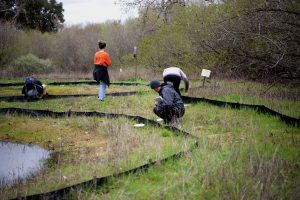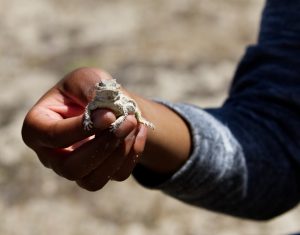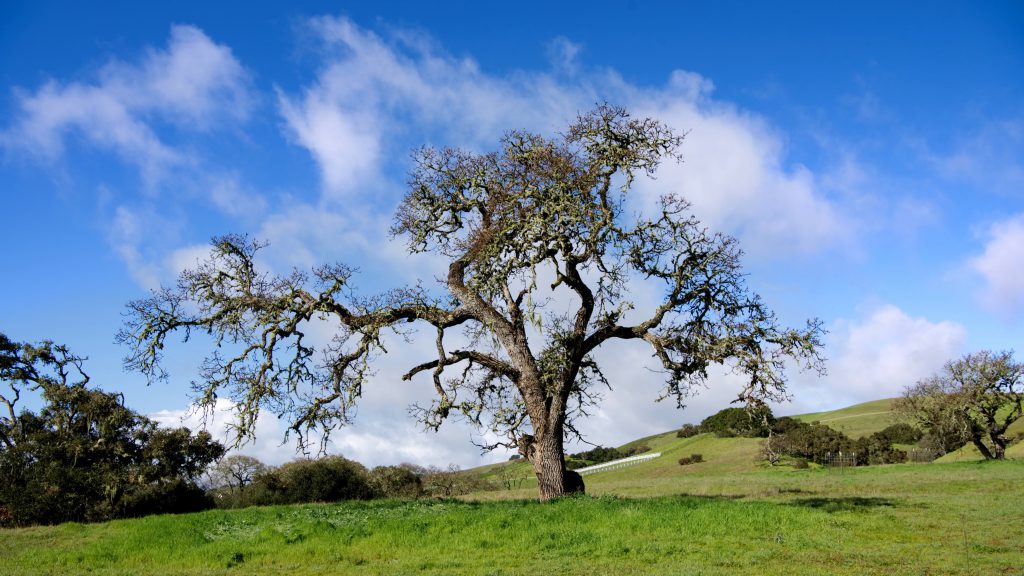
2019-03-08
© Allison J. Gong
The other day my students and I lucked out with the weather and managed to get in a full day of exploring a former military base. Fort Ord, on Monterey Bay near the small city of Marina, was an Army base until it was closed in 1994. Since then, most of the land (~14,600 acres) has been designated the Fort Ord National Monument, administered by the federal Bureau of Land Management. Smaller portions were transferred to the surrounding cities, the campus of CSU Monterey Bay, the state park system, and the University of California’s Natural Reserve system. Our guide for the day, Joe, is the reserve manager for the Fort Ord Natural Reserve, and had arranged for us to meet with researchers working at both sites that we visited. It really was a fantastic learning opportunity for all of us.
The Fort Ord National Monument (FONM) came into being in 2012–thank you, President Obama! Most of the monument is public land, with miles of trails used to hikers, bicyclists, and horseback riders. The monument is also home to the California tiger salamander (Ambystoma californiense), the central California population of which is federally threatened. The first person we met on our field trip was a guy named Robert, who is a graduate researcher working on conservation of the tiger salamanders. Robert showed us some artificial vernal pools that he’s using in his research.
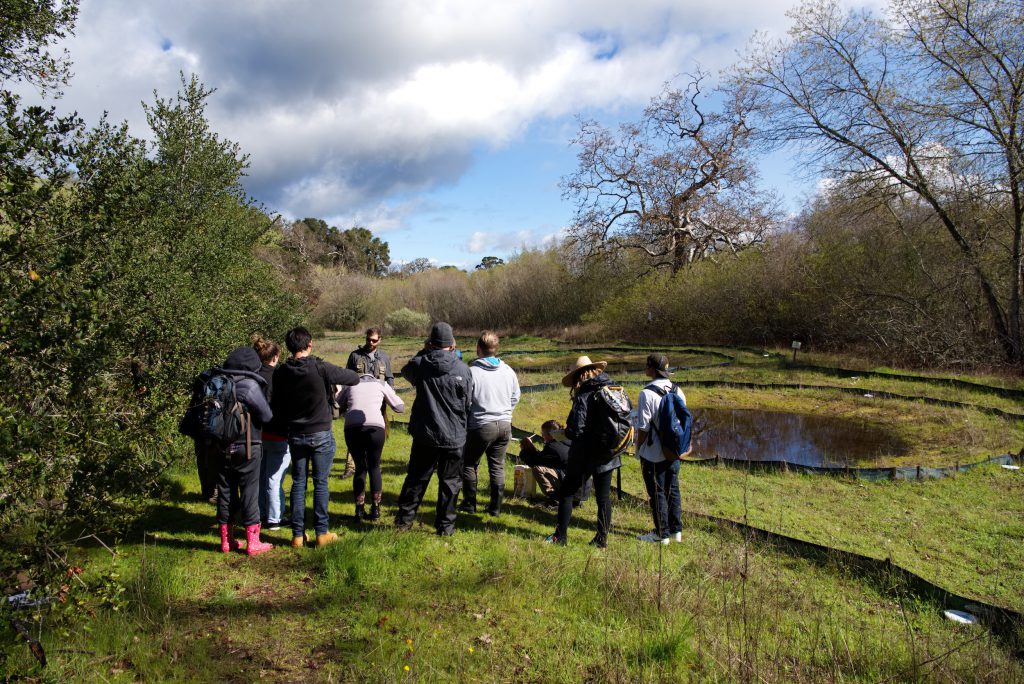
2019-03-08
© Allison J. Gong
The 18 pools are about 10 meters in diameter, lined with an impermeable layer, and were allowed to fill with natural rainwater. Robert’s plan is to seed them with salamander larvae and record how they survive and disperse from the pools. There’s a lot more to the story than that, but it’s Robert’s story to tell, not mine.
We did get to help Robert check the pitfall traps, which are arranged in pairs on each side of the fence surrounding each pool. Each trap is a small bucket set into the ground to be level with the surface. The lid is mounted on wooden legs and sits above the trap, to keep it from filling with water. Animals crawling along the fence will fall into the bucket. Robert collects data on the animals trapped and then releases them unharmed.
The tiger salamanders are all underground at this time of year so there were none in the traps. The students did, however, find a pair of western toads (Anaxyrus boreas) in one of the traps. They were in amplexus, which is what herpetologists call the mating position of frogs and toads: the male clasps the female around her body, ideally positioned to fertilize the female’s eggs as she lays them.
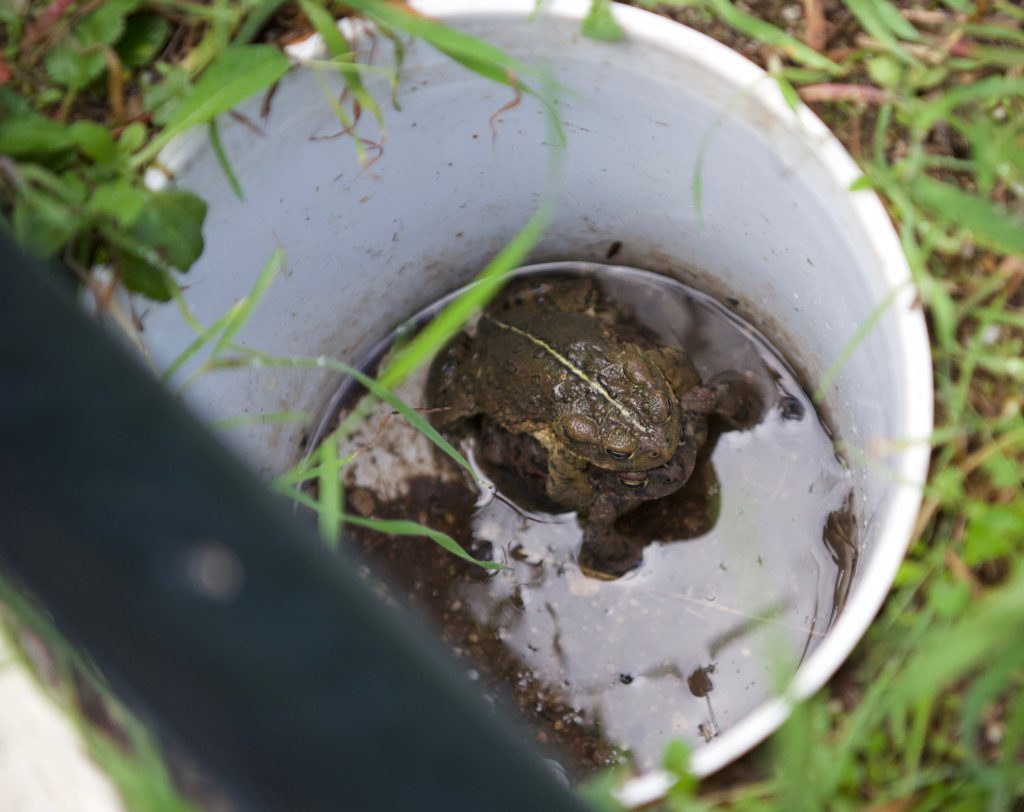
2019-03-08
© Allison J. Gong
The pair of amorous toads were released into one of the ponds, where they swam off together, still in amplexus. Their offspring will be born into the pond as tadpoles, along with those of the chorus frogs, the red-legged frogs, and hopefully not too many bullfrogs. Incidentally, herpetologists use the term ‘tadpole’ to refer only to the larvae of frogs and toads; Robert calls the larvae of his study salamanders just ‘larvae’.
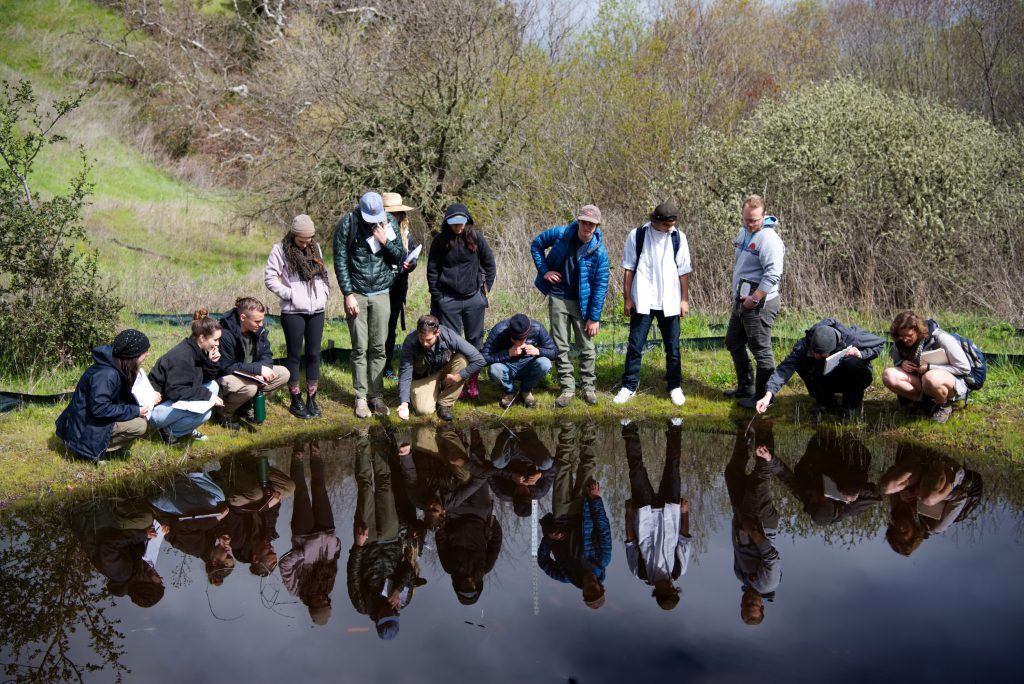
We ventured over to the Fort Ord Natural Reserve (FONR), where we ate our lunch in a clearing surrounded by coast live oaks and coastal scrub. FONR is one of five natural reserves managed by UC Santa Cruz as an outdoor classroom and teaching lab. School groups ranging from elementary school to university levels visit FONR to learn about the natural environment, often for the very first time.
FONR sits on an ancient sand dune, and all of the vegetation has had to adapt to difficult growing conditions. The soil is almost entirely sand and doesn’t hold water at all. The wind picks up just about every afternoon and blows in salt from the ocean; these winds can be quite fierce even without the salt. The sand itself gets blown around, making an unstable substrate. As a result, plants that would otherwise grow tall are stunted here. Take, for example, the coast live oak (Quercus agrifolia). In places that are more sheltered from the wind, they are tall and majestic, even as they continue their meandering growth form. At FONR they are much shorter and more closely resemble the other scrub plants than actual trees.
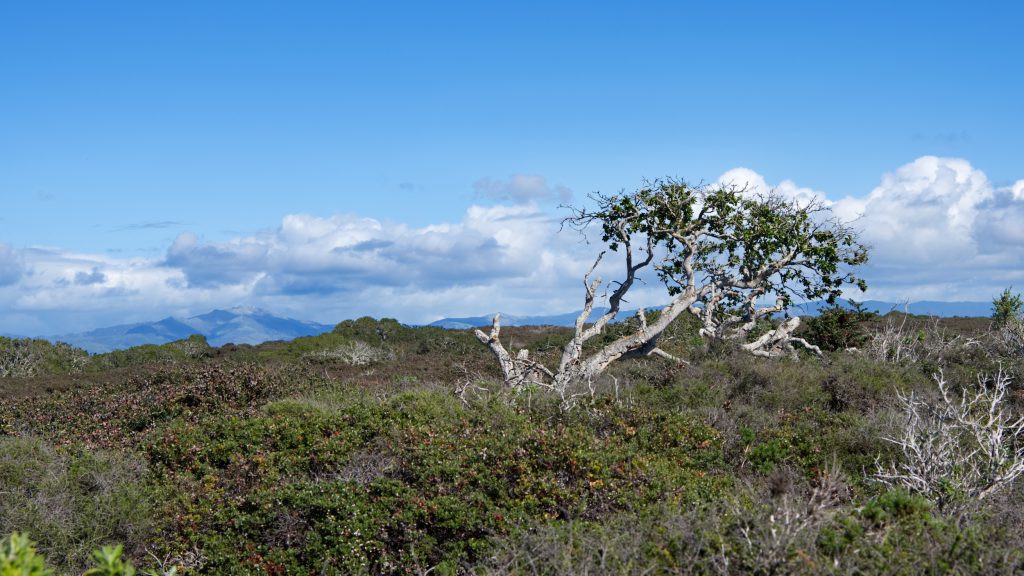
2019-03-08
© Allison J. Gon
After lunch we heard from Dani, a UCSC undergraduate student studying horned lizards (Phrynosoma sp.). The lizards are very well adapted to this environment. They live in sand, and have flattened bodies so they can hide on top of the sand and become practically invisible. Like the tiger salamanders the horned lizards are underground now. They should emerge in the next couple of months. This is one that we saw last May, when Joe invited last year’s class to visit the Reserve on a Saturday, after our planned field trip was cancelled due to rain.
In early March the plants were starting to bloom. One of the earliest bloomers is this delightful plant called ‘footsteps of spring’; its real name is Sanicula arctopoides. They look like small blotches of yellow spray paint against the ground. And when you see several of them scattered on the trail, you really understand their common name.

2019-03-08
© Allison J. Gong
There were, of course, no horned lizards to be seen. We did, however, hike the reserve, and Joe showed us some of the endemic and/or endangered plants that live there. That’s Joe, in the front of the group here:

2019-03-08
Our last stop at the end of the field trip was at a location where the Army used to work on fire suppression. They did this by dumping various flammable items and fuels on the ground, lighting them on fire, and putting them out. This activity resulted in groundwater and soil contamination, which Army contractors have been working to clean up for 20 years now. Currently the site is where Robert is raising his tiger salamander larvae in raised ponds; he will eventually release the larvae into the artificial pools that we saw earlier in the day.
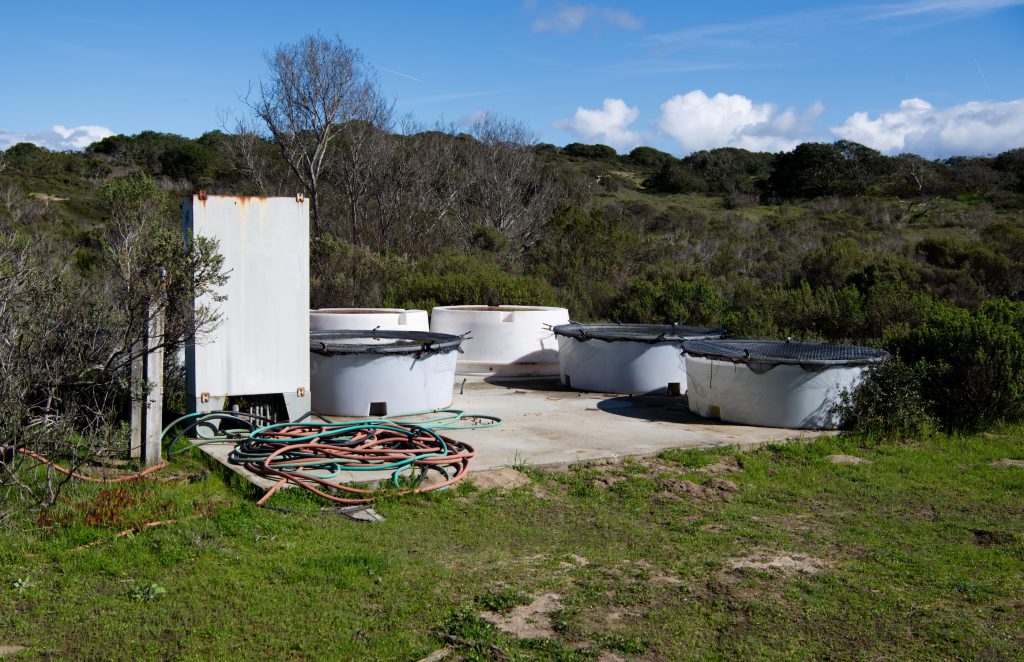
2019-03-08
© Allison J. Gong
Each of those ponds is filled with natural rain water and contains a small screened tub into which Robert placed 10 salamander eggs. The larvae, after they hatch and have used up all of their yolk reserves, feed on whatever zooplankton have sprung up in the ponds–a quick glance showed that copepods, ostracods, and insect larvae had already taken up residence. The idea is that the salamander larvae will escape from their tubs into the pool at large, which will give them lots of room to grow up.
In a very real sense, this field trip ended where it started. Things don’t always work out this nicely, and my Type A personality is pleased at both the symmetry and the closure. Because these field trips are necessarily snapshots of what is happening at a particular moment in a particular place, it can sometimes be difficult to connect them to the real world. This week, though, I feel that my students got the whole story, or at least the entire outline of it. This visit to FONM and FONR may very well be my favorite field trip of the class, because I learned so much about things that are new to me. Thank you, Joe, for arranging such an amazing day for us!

